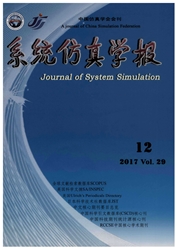

 中文摘要:
中文摘要:
垃圾填埋气体(LFG)的资源化利用作为控制其对周围环境污染的有效手段已得到了越来越广泛的关注。填埋气体的迁移过程是一种伴随多相多组分的非稳态渗流问题。将垃圾填埋场视为非饱和传输介质,建立了描述填埋气体迁移演化的气-水两相耦合数值模型。数值仿真结果表明:垃圾存放的年份越久,产量下降越缓慢。封场a年与封场b年后产量的比值同气体压力比值基本相同;随着饱和度(Sw)的增加,气体产量呈下降趋势。因此,在预测抽气量的过程不能忽略水相饱和度;提高固有渗透率(k)后气相压力梯度增大,气体的传输路径变宽,同时,填埋气体流速加快,导致气体的产量的增加。因此,在预测注井抽气状态下填埋气体的压力及产量分布时以及对填埋气体收集系统设计时,对气体传输参数进行灵敏性分析具有重要意义。
 英文摘要:
英文摘要:
The reuse of landfill gas has been given more and more attention as an effective method to control the ambient environment pollution. LFG (landfill gas) transport was proposed by transient seepage model with multi-phase and multi-component in landfill. The landfill can be considered as the unsaturated zone, the coupling numerical model has been developed to describe LFG flow and evolution. The numerical results show that the flow rate slowed down with increasing elapsed time of landfilled waste. Ratio of flow rate on time age a to time age b is very close to the gas pressure. The flow rate decreased with increasing water phase saturation. Therefore, evaluation extracting gas of landfill can not neglect the water saturation. Gas pressure gradient increased with increasing the permeability which leading to the path of gas transportation. At the same time, LFG flow velocity increased leading to gas flow rate increasing. There is important significance for parameters sensitivity analysis to evaluation distribution of LFG pressure and production on extracting and design of collection system.
 同期刊论文项目
同期刊论文项目
 同项目期刊论文
同项目期刊论文
 期刊信息
期刊信息
